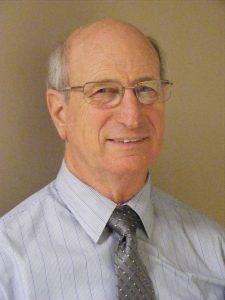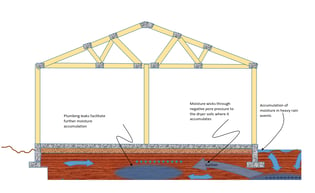
Fred Nelson PE
Bob: What got you interested in engineering as a young person?
Fred: Two things influenced me. The first was as a kid I built a dam in the ditch on the side of my Grandmothers farm. The first attempt failed. Intuitively I figured out to put in a pipe for overflow. I remember feeling so great for overcoming an obstacle to make something work. Unfortunately the cows trampled it when I returned the following year. The second was my high school teacher who saw something in me and encouraged me to apply to a contest/interview. I ended up winning for all of Tucson.
Bob: I have found that many formative experiences in youth help people find meaning and purpose in their occupation in their adult life.
Bob: You have worked on many interesting projects over your many decades in your career. What stands out at the most interesting?
Fred: Helping with the World Trade Center collapse on 9-11. I worked for FEEMA and I felt good that I could be a part of part of Phoenix (AZ-TF1) and other rescue personnel with monitoring. I learned how great a job Leslie Robertson did in designing an additional Girder trusses that gave thousands of people time to evacuate before the collapse. The other notable project was the Surfside Condominium Collapse of last year also a member of the SEER (Structural Engineering Emergency Response) team
I designed the Gilbert Road Bridge over the Salt River. This was my first bridge 1st bridge and it was a very big job. We Reused Girders from Scottsdale Bridge and saved the client a lot of money. It came in about half the estimated cost. Federal moneys were used on the initial investigation and it turned out that the borings were not deep enough on the nearby Hyden Bridge. The Hayden Bridge soil was not sampled deep enough by California engineer vs my local geotech on the Gilbert Bridge who used a Becker drill and went to 120 feet.
I also the EOR for Mormon Temple renovation 1990. This was an important job for me personally it made the Temple accessible for my wheel chair bound wife.
Bob: You have specialized in Forensics. What attracted you to this and Why?
Fred: I get a lot of satisfaction from understanding how things work and why they don’t work… sort of like the dam experience as a young person. I also really like helping people who are in need and the relationships that come from that kind of service. The gratefulness of the people that I help means a lot to me.
Bob: I was extremely grateful to you in helping me with the Torreon Pines collapse.
Bob: being in forensics, you get to see many problems with design. What is the most common mistake you have seen made?
Fred: Many times I have seen the use of common details without thinking through if they are really appropriate for the proposed project. Also I see commonly people using computer generated solutions and not stepping back to see if those solutions make sense in all areas of a proposed design. Sometimes I have seen PE’s not supervising EIT’s enough and missing key things that an EIT may not have the experience to recognize. Also understanding your limitations. Recognize what you don’t know and get help from those who do have expertise in a particular area when it is needed.
Bob: what is the most common mistakes you have seen in implementation/construction?
Fred: Not recognizing that a changed or unknown condition requires the input of the engineer. Often contractors in their desire to stay on schedule will proceed instead of holding up a project if need be to make sure the changed condition is addressed properly. Not reading the general conditions or the notes that can have a huge impact on a project performance. Not communicating all of the needed information to a client in order for them to make good decisions.
Bob: I understand that last one particularly as we in the past have struggled to encourage all of our people to take time out of their busy day to go above and beyond normal expectations to over communicate.
Bob The foundation repair industry has largely developed to provide analysis, recommendations and designs on structural components without the services of a licensed professional engineer. How do you feel about that?
Fred: Foundation repair contractors need to make sure the licensed engineer understands the problems. Communicate clearly with owner. If there are limitations to the work, direct communication needs to be clearly shown and understood by the owner. Sometimes unsupervised sales guys can overstate the solutions or miss important things.
Bob: You have seen many proposals from foundation repair salesman that were dysfunctional and lacking in engineering expertise. Can you share one or two that illustrate why this is not a good idea?
Fred: One that recently comes to mind is where a long small diameter post was proposed to sit above ground on a house built on a slope experiencing lateral movement. This solution had no consideration for lateral stability for the building nor any supports to resist lateral movement.
Bob: what advice do you have for new and upcoming forensic engineers?
Fred: Learn to be a good engineer first. You can’t diagnose problems if you don’t understand thoroughly how they are supposed to function in the first place. Being a good forensic engineer requires caring for people and having good communication skills, sometimes not the strongest suit for some engineers. Forensics requires good report writing. Learn the components necessary for good report writing. First preview what you will say, say it, and then review what you have said. A good analogy is like the medical profession. First you need to learn the parts. Then you need to know how it functions and then how it dysfunctions. Then after you have learned all those things then you can learn how to treat. A forensic engineer does those same basic things only with structures. It’s also important to have good mentors. I had Jim Deatherage to help me for example who was an awesome teacher.






